As you probably know,pid controllers are important components in many electronic systems. In fact, they’re so ubiquitous that you might not even realize you’re using one right now as you read this very sentence! If pid controllers interest you and you’d like to know more about how they work, then read on for a quick introduction.
What is a PID Controller?
An example of an application where PID controllers are used is temperature regulation systems, particularly for manufacturing processes that use hot liquids or gasses.
The controller accomplishes this feat by joining three distinct calculations: proportional control, integral control and derivative control.
Proportional control measures how far off the current process value is from the desired set-point. It does this by multiplying the error (the difference between the target and actual measurement) with a proportional gain or coefficient. The output of this calculation will adjust to bring the process back to its target set-point.
Integral control measures how long an error has persisted by summing up all past errors over time and then multiplying it by an integral gain or coefficient. This helps move the process variables closer towards the desired set-point, even if there is a large discrepancy between them initially.
Derivative control measures how quickly an error is changing over time by calculating its rate of change, multiplied by a derivative gain or coefficient. This adds stability to a system and helps reduce overshoot and oscillations.
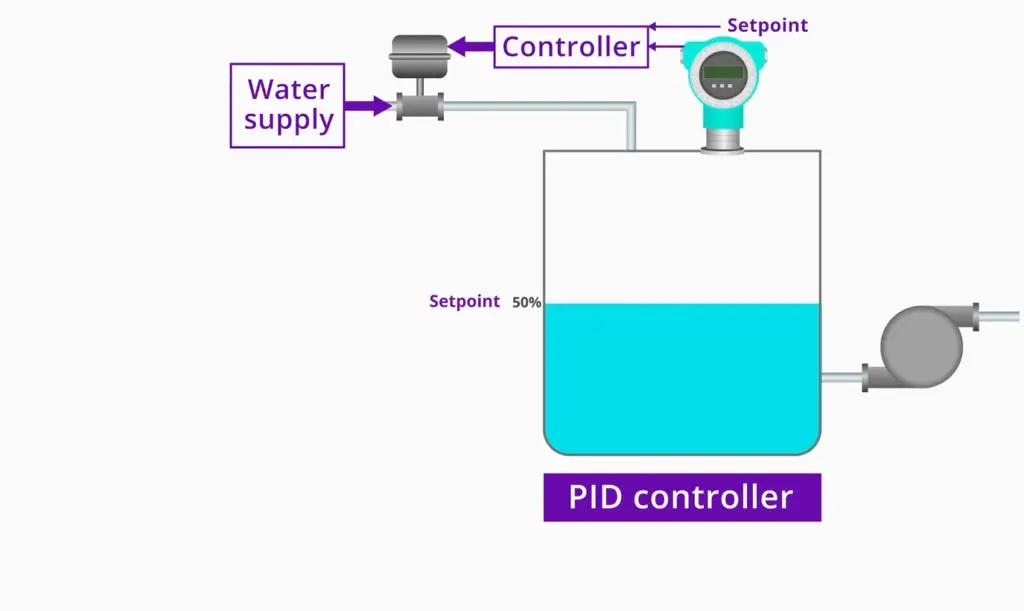
When used correctly, these three control parameters work together to accurately adjust the process variables in order to maintain them at their desired set-points. This type of system offers advantages such as increased accuracy, improved efficiency and reduced manual oversight. PID controllers are widely used in applications such as robotics, manufacturing processes, heating/cooling systems, industrial automation and even spacecraft navigation.
Overall, a PID controller is an essential tool for keeping complex operations running efficiently by automatically adjusting their system variables in order to maintain their desired set-points. By combining all three calculations – proportional control, integral control and derivative control – it can accurately measure, monitor and manage processes with feedback so that they remain at their target values. As such, it is a popular and reliable choice for industrial and commercial applications. [1]
PID Controller Block Diagram
The purpose of this diagram is to provide an understanding of how a PID controller works, its structure, and its features.
In general, a typical PID controller consists of three main parts: the Proportional term (P), the Integral Term (I), and the Derivative Term (D). Each part plays an important role in controlling process variables such as temperature, pressure, level or flow rate.
The P component is generally responsible for most of the initial response to a change in the process variable, while the I and D components provide more subtle adjustments. The Proportional term regulates the proportional gain, or how much the output needs to be increased or decreased when a certain amount of error is detected in comparison to the desired setpoint.
The Integral term accounts for any off-set errors that may be present due to changes in environmental conditions. It does this by constantly accumulating errors over time until eventually it reaches its maximum value and then starts decreasing again.
Finally, the Derivative term measures rate of change of error with respect to time and acts as an anticipatory element in PID control loops by predicting future loop behavior from past data. It helps reduce overshoot due to the Proportional term, and allows faster response times when there are rapid changes in the process variable.
The PID controller block diagram is a useful tool for understanding how these components work together to control various processes. It can be used as a reference when designing or tuning a PID controller for different applications. By understanding the block diagram, engineers will be better equipped to create effective control systems that provide the desired performance results. [2]
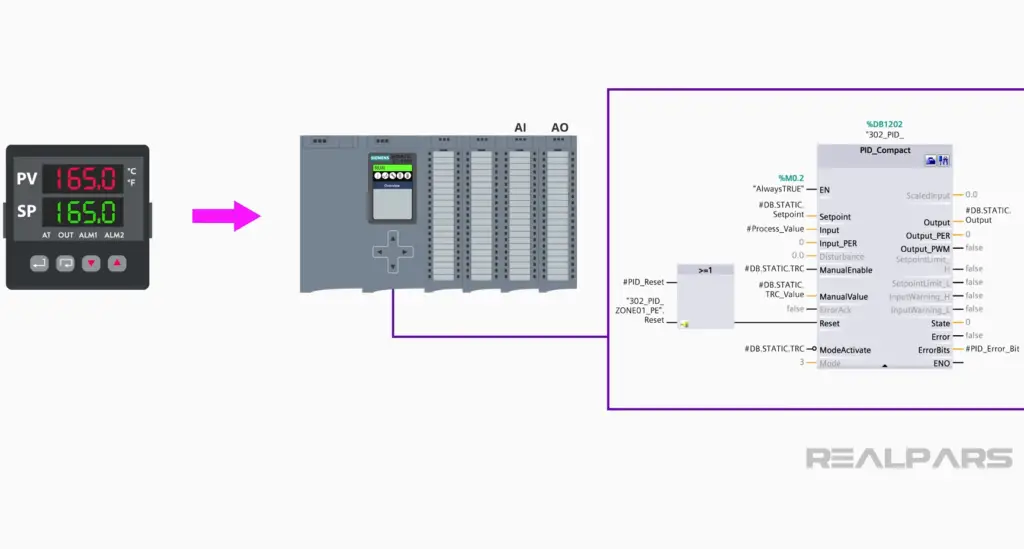
Working of PID Controller
A PID Controller works on the basis of a feedback loop. It takes in an error signal and uses this value to calculate the necessary corrective action. This is done by comparing the current output with the desired set point, which gives an indication of how much the system needs to be adjusted. The controller then calculates a required output by subtracting the current output from the set point and adding it to the previous inputs. This is known as Integral Proportional Derivative (IPD) algorithm or simply PID control.
The proportional gain determines how quickly a system can respond to a sudden change in input or deviation from desired output. The integral gain helps reduce steady-state errors caused by external disturbances, such as friction, wind, or temperature variations. The derivative gain predicts the rate of change in output and is used to minimize overshoot and undershoot.
In essence, PID controllers use feedback signals from the system they are controlling to continuously adjust their parameters and ensure accurate control over the process. This makes them extremely versatile and reliable for a variety of applications such as regulating temperature, pressure, flow, speed, position, and even torque. [3]
Types of PID Controller
Proportional Control
Proportional control is the most basic type of PID controller. It uses a proportional gain to adjust the output based on the difference between the setpoint and process variable (error). This prevents large overshoots and settles at the setpoint quickly.
Standard Type PID Controller
It is a closed-loop control system commonly used in industry. The term stands for Proportional, Integral and Derivative, which are three separate mathematical functions that interact with each other to bring input signals closer to the desired output signals.
Real-Time PID Controllers
These are designed to help control the temperature, pressure, speed and other variables in industries such as manufacturing and process control. They compare the current measured value to its desired set point. any variation between the two is corrected with a correction factor or output signal.
Tuning Methods
PID controllers use one of several tuning methods to find the optimal settings for control loop performance. Popular methods include manual tuning, Ziegler-Nichols open-loop method and Cohen-Coon closed-loop method.
Manual tuning is the most basic option, allowing the user to adjust parameters such as Proportional Gain (Kp), Integral Gain (Ki) and Derivative Gain (Kd) until desired results are obtained.
The Ziegler-Nichols open-loop method uses process test data – preferably a Step Response Test – to determine settings that provide stable operation at 90% of maximum throughput while minimizing overshoot.
Lastly, the Cohen-Coon closed-loop method involves adapting controller settings in response to changes in process conditions. This method provides a more accurate calculation of ideal settings, allowing the user to benefit from closed-loop control even under changing circumstances. Once tuned, a PID controller will provide optimal regulation of the process variable with minimal effort and time expenditure on the part of the user.
For users who don’t want to spend time tuning and adjusting settings manually, there are “plug-and-play” PID controllers available that offer pre-programmed settings and auto-tuning capabilities. These can be connected quickly and easily to most systems and provide a cost effective solution for those looking for an improved regulatory performance without having to do any additional work.
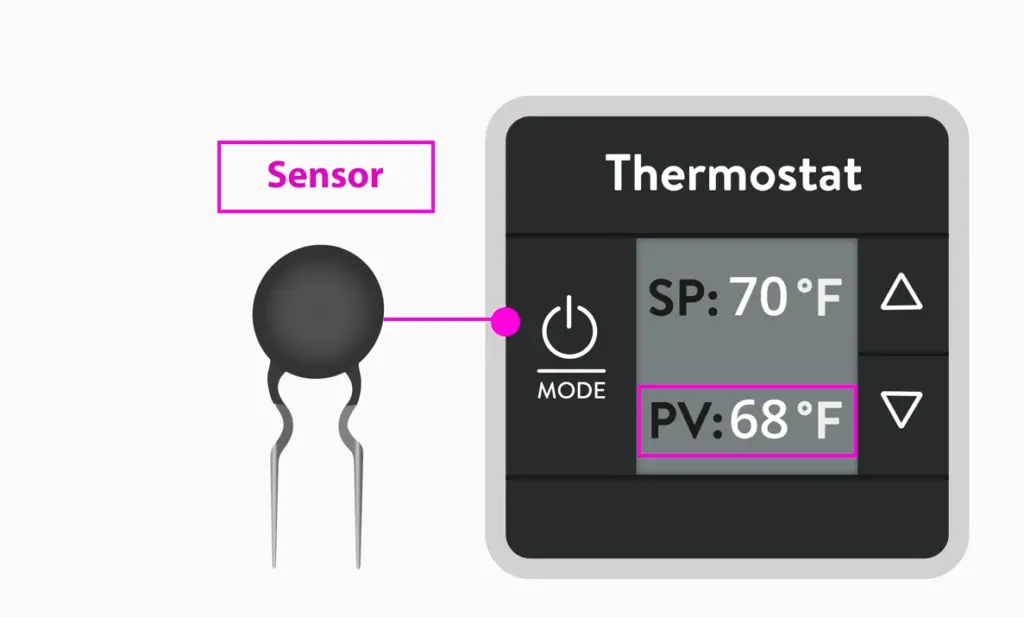
Using one or more of these methods, users can efficiently and accurately tune a PID controller to meet their desired performance specifications. With the right settings, a PID controller can provide precise control of the process variable, ensuring stable and consistent operation with minimal effort. [4]
PID Controller Structure
The structure of a PID Controller consists of three components: Proportional (P), Integral (I) and Derivative (D).
Each component has its own unique set of characteristics, as well as individual gains to adjust the controller’s behavior.
The P Component – This is the most basic part of the controller and it’s responsible for outputting a signal that is proportional to the current error. The larger the error, the more output will be sent from the controller. In other words, if the process variable deviates from the set point, then this component will increase or decrease its output in order to bring it back into line.
The I Component – This component records errors over time by summing them up, and then adjusts the output accordingly. This can be useful for processes with slow dynamics, such as temperature control systems or motor speed regulation, since it ensures a smooth transition to the desired set point.
The D Component – This is the most complex part of the controller and it’s used to measure how quickly the process variable is changing. It takes into account two measurements at different points in time and then calculates the rate of change between them. This allows the PID Controller to anticipate future errors and make adjustments before they happen in order to keep accuracy high.
Overall, a PID Controller can be tuned by adjusting each of its components (P, I and D) according to your specific requirements or needs. For instance, if the process variable is oscillating around the set point, then you might try reducing the proportional gain or increasing the derivative gain.
Applications
Temperature Control of Furnace
Several industrial processes such as the temperature control of furnaces involve a variety of temperatures in different stages. A PID controller can help maintain the temperature of each stage by using feedback from its sensors.
Position Control in Motor Systems
The position control system involved with motor systems is also often regulated with a PID controller that uses feedback to ensure accuracy and precision. It measures parameters like speed, acceleration and position and then adjusts them accordingly.
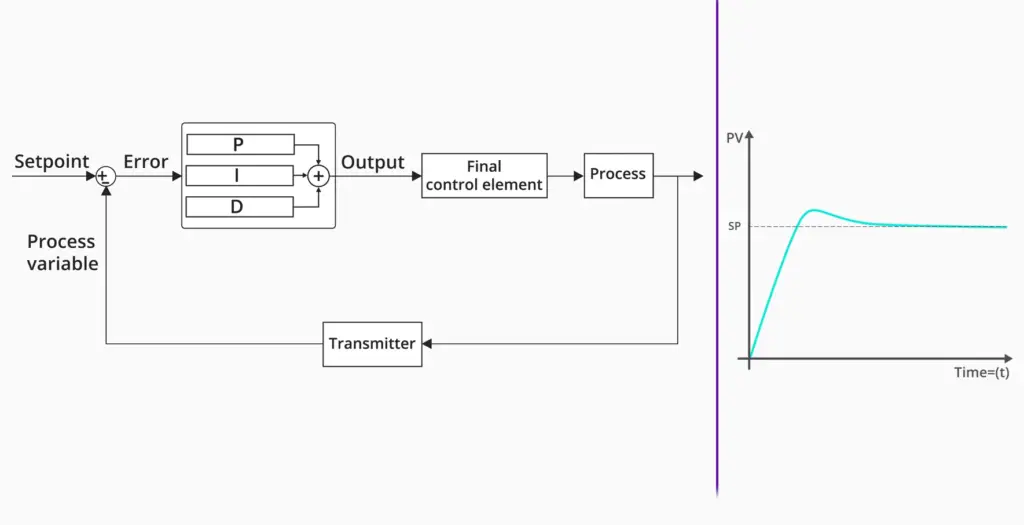
Flow Control
A common application of PID controllers is flow control systems which are used in water distribution networks or many other applications where fluid flow needs to be accurately regulated. The system sends out pulses proportional to a detected error, allowing it to adjust the flow rate if necessary, resulting in more accurate control over the system.
Vibration Control
The vibrations produced by industrial machinery can often be dangerous and must be carefully monitored to ensure safety. A PID controller can be used to regulate the vibration levels, allowing it to automatically adjust in response to changes in the environment or any fluctuations in the system itself. [5]
MPPT Charge Controller for Solar Systems
Most solar inverters and charge controllers are equipped with a PID controller, which is used to adjust the output current according to changes in the environment. This ensures that the system is always running at its optimum efficiency, allowing it to make use of as much energy from the sun as possible.
It can also be used in cruise control systems for vehicles and other automated systems. The PID controller constantly adjusts the speed of the vehicle based on feedback from sensors such as wheel speed or acceleration. It can also be used in robotic arm controllers where precise movements must be made in order to perform a task efficiently. All these applications require precise control over a number of variables, making them ideal candidates for PID controllers.
In summary, PID controllers are an important part of many automated systems and have a variety of applications in the industrial, automotive and robotics fields. The versatility and effectiveness of PID controllers makes them one of the most popular control systems used today. They are simple to implement, cost-effective and highly reliable, making them an attractive option for a wide range of applications. With the right configuration, they can provide precise control over any system requiring feedback from sensors.
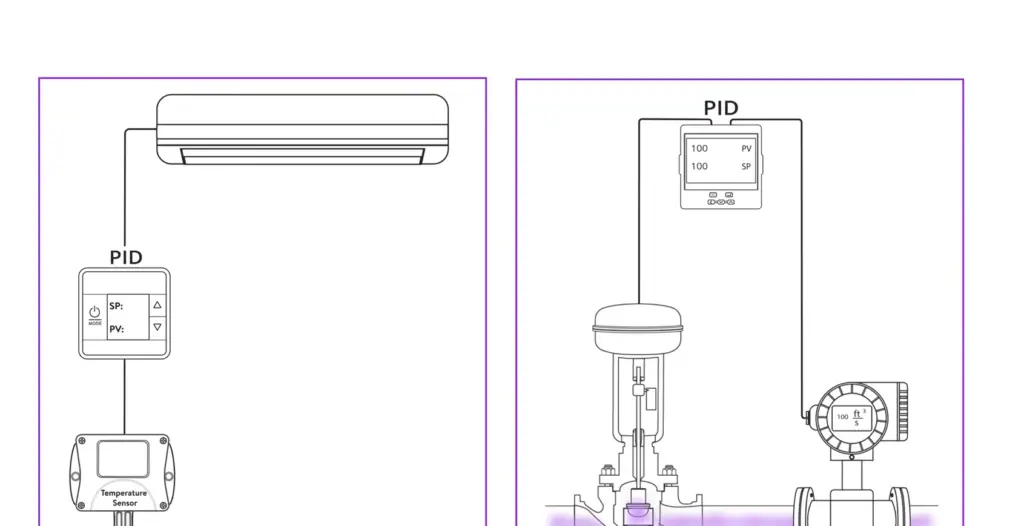
PID Controller Interfacing
PID controllers are often interfaced to other systems or elements in order to provide control. This is typically done via an analog voltage or current input/output signal, but can also be done with digital interfaces such as USB, RS232 and CAN bus networks. Interfacing a PID controller requires the user to understand both the system being controlled and the type of PID controller used. A PID controller may need additional components for a successful interface, such as filters or damping devices for stabilizing signals.
It is important that all connections are properly made and wired according to manufacturer specifications. Once the system is correctly interfaced, it can be tuned using PID parameters such as gain, integral time, derivative time, sample time and setpoint tracking accuracy. Tuning the system is essential for proper operation and optimum response from the PID controller. A well tuned PID controller can help reduce or eliminate overshoot, undershoot, ringing and steady-state errors in the control loop.
Overall, understanding how to interface a PID controller is an important part of controlling complex systems or processes. It requires an understanding of both the system being controlled as well as the hardware and software components necessary for successful implementation. With careful planning, tuning and monitoring, a properly interfaced PID controller can be used to provide accurate and reliable control of various types of systems. [6]
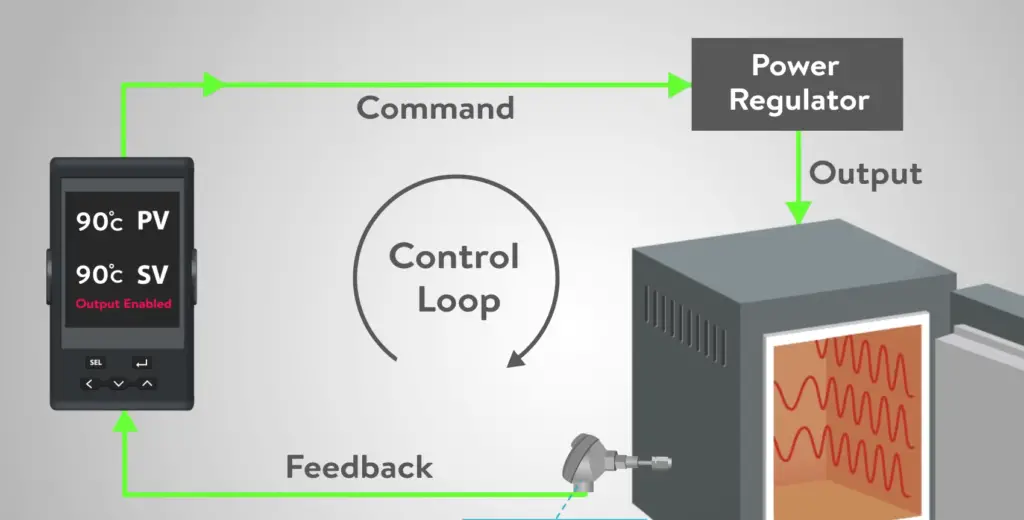
What is a Digital PID Controller?
It works by continuously calculating the difference between a measured process variable and a desired set point. The controller then adjusts the output of the controlled device (the “plant”) until the two match. Digital PID controllers are often used in closed-loop feedback systems where one action affects future performance, making them ideal for processes that must be maintained within tight parameters.
Digital PID controllers offer many advantages over analog designs including increased accuracy, faster response times and increased flexibility with programming capabilities like reset time optimization, auto-tune functions, and built-in signal filtering/noise reduction features. They also have a more reliable physical design, lasting longer and requiring less maintenance. Digital PID controllers are also often used in combination with other control systems such as programmable logic controllers (PLCs), allowing multiple process variables to be monitored and adjusted simultaneously.
Overall, digital PID controllers offer a highly efficient and cost-effective solution for various industrial applications that require precision control of process variable outputs. With their increased flexibility, accuracy, speed and reliability, digital PID controllers have become the go-to choice for many modern industrial processes.
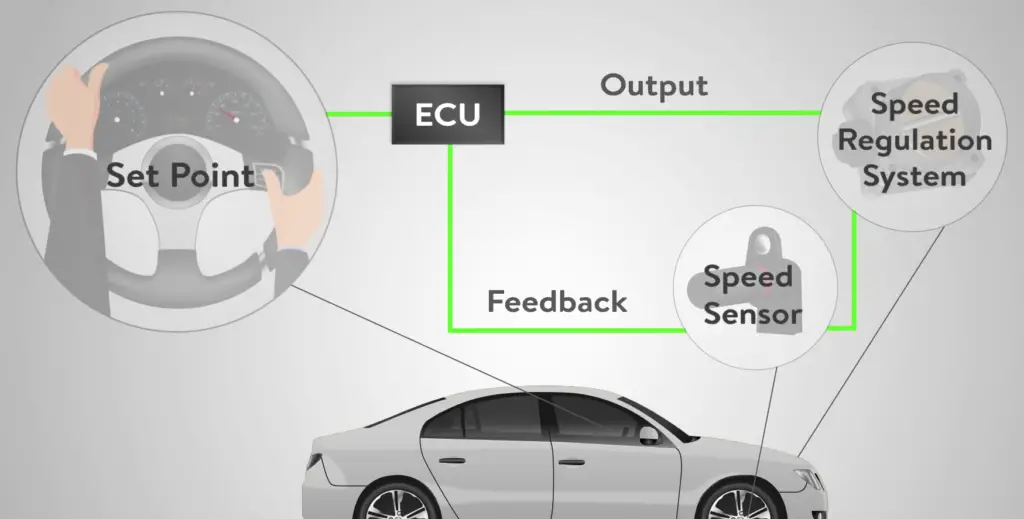
FAQ
What is a PID controller used for?
A PID controller is a control algorithm commonly used in industrial and mechanical processes to regulate temperature, pressure, position, speed, and other process variables. It is named after its three proportional-integral-derivative terms that represent the collective response of the system. A PID controller continuously calculates an error value as the difference between a desired setpoint (SP) and a measured process variable (PV) and applies correction based on proportional, integral, and derivative terms (denoted P, I, and D respectively), hence the name. The output from the PID controller can be used to adjust various parameters of the process such as heating or cooling elements or motors for positioning or speed control. This helps to ensure accurate and stable operation over time. The use of a PID controller can be beneficial in applications such as controlling the temperature inside an oven, the pressure of a gas or liquid system, the speed of a motor, and other similar processes. In addition, PID controllers can be used to minimize disturbances and optimize performance for more complex control systems.
What is a PID controller example?
A PID controller example is a heat exchanger where the output from the system needs to be monitored and regulated. In this case, a temperature sensor monitors the output of the heat exchanger and sends signals to the controller which in turn reduces or increases the rate of flow through the heat exchanger as needed to maintain a desired temperature level. This process helps maintain optimal conditions for efficient operation and prevents any damage due to overheating or freezing. Other examples of PID controllers include water heating systems, industrial ovens, air conditioners, robotic arms, and aircraft engines. These controllers have revolutionized automation processes across various industries due to their ability to provide high accuracy control over many different parameters with minimal effort.
What is a PID controller in a PLC?
PID stands for Proportional-Integral-Derivative and describes a basic algorithm where the output of the controller is based on three components; Proportional, Integral and Derivative. The proportional component gives an instantaneous response to changes in input signal which helps to reduce oscillations around the setpoint. The integral component adjusts the output until it matches the setpoint and the derivative component helps to eliminate any lag between a change in input signal and system response. All three components are adjustable according to user needs.
What are the 3 main components of a PID controller?
A PID controller is composed of three main components: the Proportional (P) component, Integral (I) component, and Derivative (D) component. The Proportional component measures and responds to the current error value; the Integral component helps correct long-term errors by accumulating them over time; and the Derivative component adjusts quickly in response to changes in error rate. Together, these three components work together to achieve accurate control of a process or system. The values for each of these components are adjusted until optimal performance is achieved. For example, an increase in the P coefficient will make the system more responsive but can also cause instability if it is set too high. The I and D coefficients are used to limit the P coefficient’s impacts and ensure stability. Proper tuning of these three coefficients is key to achieving optimal performance from a PID controller. PID controllers are utilized in a wide variety of applications, including robotics, machine tools, process control systems, and automotive engines. They can be used for controlling temperature, position, speed, flow rate, and other parameters. The unique ability of a PID controller to accurately monitor and adjust for changes in system conditions makes it an ideal choice for many processes or systems where precision is important.
When should you not use PID?
PID controllers should not be used when a simple on/off switch or bang-bang controller is sufficient. If the system has long delays, nonlinearities, or extreme overshoot and undershoot, then PID controllers are also not suitable. Additionally, if the environment changes quickly and often (e.g., temperature variations in an industrial oven), it can be difficult for a PID controller to keep up with the changing conditions, making them unsuitable for this type of application. Finally, PID controllers can also become unstable if their gains are set too high so care must be taken to adjust them properly.
How does a PID temperature controller work?
The controller takes an input from a sensor, such as a thermocouple, and then compares it to the desired setpoint. If the measured temperature is lower than the setpoint, then the output of the controller will increase until the temperature reaches the desired setpoint. Conversely, if the measured temperature is higher than the setpoint, then the output of the controller will decrease until it reaches its goal. The PID calculations help to ensure that there are no sudden changes in temperature while still allowing for accurate control over time. Additionally, these controllers can be used in both heating and cooling applications depending on the type of system being used.
What is a PID display?
A PID display, or Proportional-Integral-Derivative display, is a type of control system that uses three mathematical algorithms to help automate processes. The algorithm works by receiving input from an external device and then adjusting the output accordingly. This helps in controlling various aspects like temperature, speed, pressure, etc. PID controllers are used in systems where exact measurements must be maintained at all times and provide improved accuracy when compared to other types of controllers. They can also be used for more complex tasks such as navigation and robotics. PID displays are often found in industrial environments due to their reliability and ability to maintain consistent results over time. Additionally, they provide an economic solution for automation applications as well as the flexibility needed for changing parameters.
Useful Video: What is a PID Controller?
Conclusion
A PID controller is a powerful tool for managing the temperature of a process. It can help to keep the temperature stable and reliable, which can be beneficial in many applications. While it does require some tuning to get it running correctly, once set up, it can provide excellent performance. Furthermore, because of its ability to accept various inputs and outputs, it is highly versatile and can be used in many different types of situations. This makes it an ideal choice for anyone looking to manage their process temperature more efficiently and effectively. With proper implementation and tuning, a PID controller can help ensure that your process runs at peak efficiency with minimal effort on your part.
References
- https://www.omega.com/en-us/resources/pid-controllers
- https://www.ni.com/en-us/innovations/white-papers/06/pid-theory-explained.html
- https://www.power-and-beyond.com/pid-controller–definition-and-explanations-a-a69cf75cceed7b82932c0793458f58c9/
- https://www.elprocus.com/the-working-of-a-pid-controller/
- https://www.electricaltechnology.org/2015/10/what-is-pid-controller-how-it-works.html
- https://realpars.com/pid-controller/





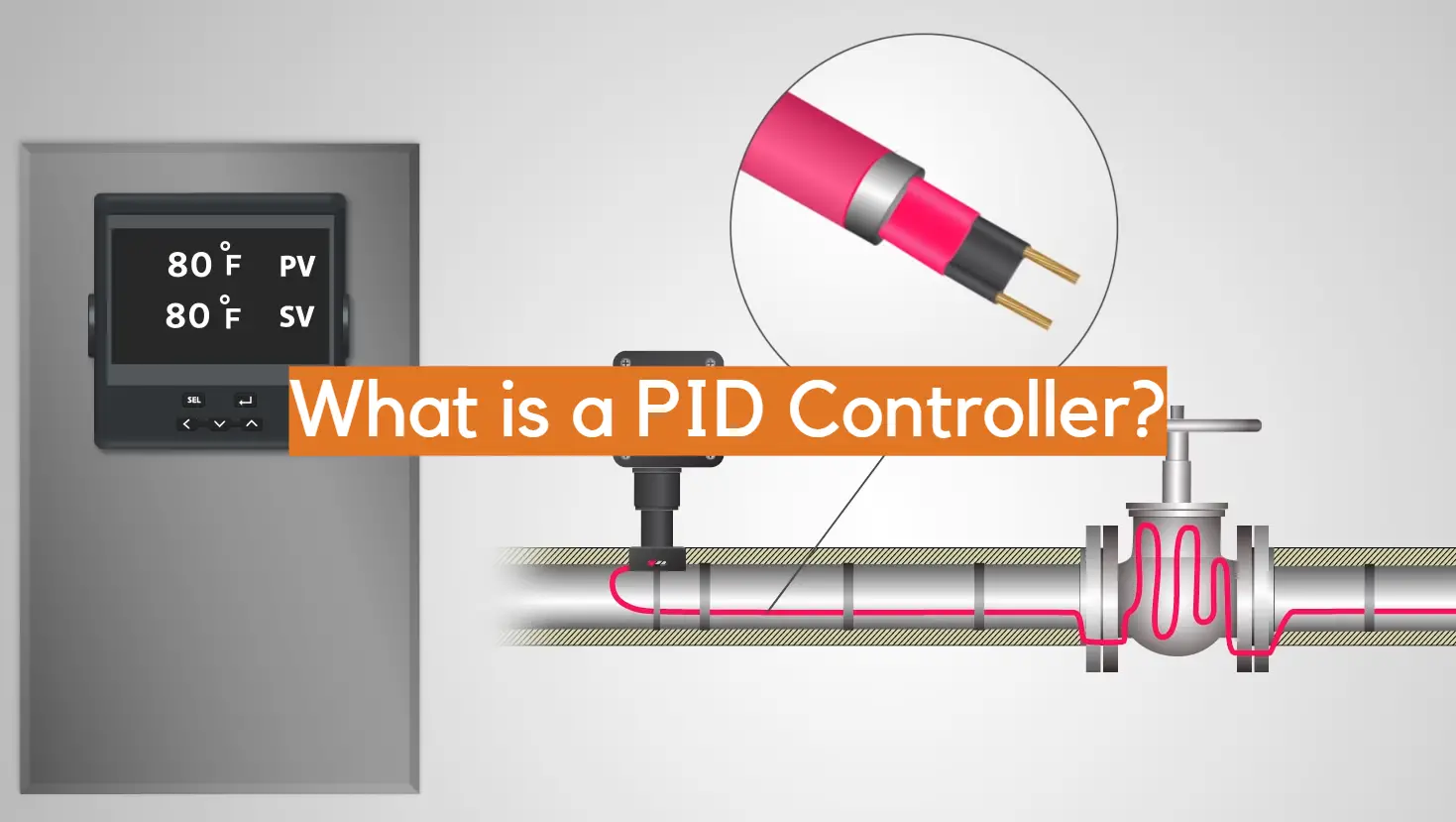




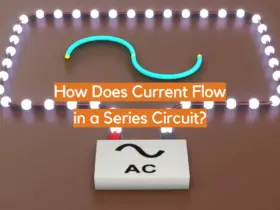
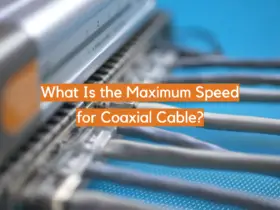


Leave a Reply